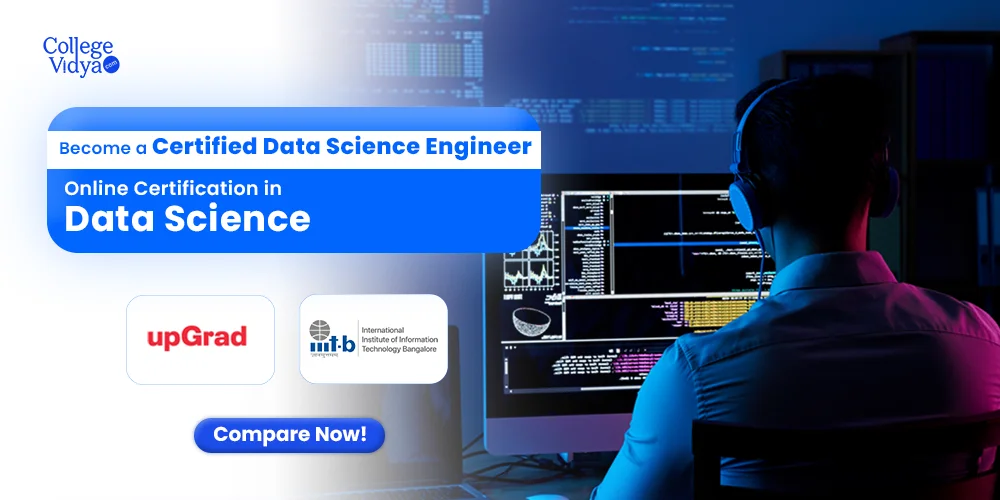Expert Interviews
- University Reviews
- Career Guide
 Video Counseling
Video CounselingImportant Facts
- Ask any Question - CV Forum

Top 25 Final Year Project Ideas Topics [ New Update 2025!]
Isha Adhikari Sep 17, 2025 35.4K Reads

Final year projects are no longer about getting grades only. As the New Education Policy (NEP) drives toward more practical, hands-on learning and industries demand new skills literally every day, these types of projects have become a real challenge, testing how well you can put into practice what you have studied in a real-life situation. The selection of the right project may be perplexing and hectic, as it not only affects your marks but also comprises a major aspect of your portfolio in jobs or further education.
And therefore, here is a list of the top, most interesting, and practical project ideas for students in science and technology to make this easier. Therefore, in case you are a final-year student, majoring in either technology or computer science, read on to get new ideas and select the one that best suits you!
Why is the Final Year Project Important?
Final year projects refer to projects that are required by the course, and students studying higher education in either the undergraduate or postgraduate programs must complete the project during the final year of their undergraduate or postgraduate degree. Final year projects, either in the form of research projects, dissertations, or creative projects that force the student to develop a system, are not only important in terms of assessment but also in skill building, leading to the transition to the professional world. These are particularly helpful among students of the specialisations in STEM, and henceforth, we will be exploring in more detail the project ideas of the final year in the fields of computer science and technology.
To ease this process, here we have talked about a few of the most appealing project ideas for students of science and technology. So, if you are a final year student from the domain of technology and computer sciences, continue reading to explore new ideas and find the best fit for your project!
Why is the Final Year Project Important?
Final year projects are full-term course mandated projects that students pursuing higher education at the undergraduate or postgraduate levels have to complete in the last year of their degree. Final year projects, whether in the form of research projects, dissertations or creative projects which require the student to build a system, are important not only from an evaluative perspective but also for the skill development before venture into professional fields. They are especially useful for students from the STEM specialisations, and from hereon, we shall delve deeper into the final year project ideas for domains related to computer science and technology.
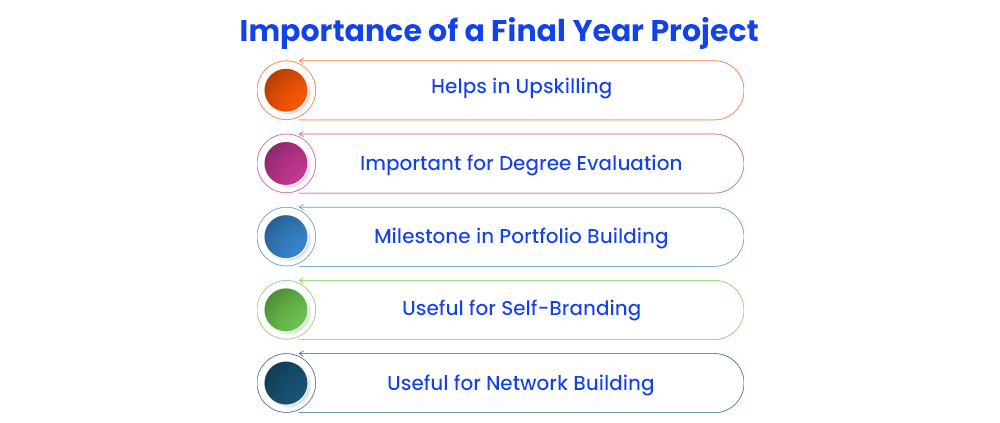
Here, we have highlighted a few of the prime reasons as to why one should emphasise on building a unique and meaningful final year project as part of their degree.
- Cornerstone for Skill Building
Naturally, skill-building is the whole idea of the final year project. These projects are planned to be included in the degree courses in the final year, so that the student has sufficient knowledge of putting them into practice and developing their practical working skills concerning different areas. This is not just a case of personal upskilling and development, but also the ability to succeed in the industry. And endeavors are the foundation of gaining proficiency in practical skills.
- High Stakes for Degree Evaluation
Final year projects are also very important in terms of the assessment of the degree. Such projects are usually mandatory for the partial completion of the course requirements of the specific degree in most instances. Therefore, it may be important to work on a project that can showcase all your skills and areas of strength in your specialisation, which will, in turn, guarantee a fair and satisfying evaluation, which will be reflected in your global GPA in the degree.
- Milestone in Portfolio Building
Although other projects and research projects are also helpful in building a portfolio, the final year project is a milestone project in the portfolio that will influence career experience. Therefore, projects of the final year that reflect interests, abilities, and strengths help create a commodity to the collection of experience and action pursued.
- Competitive Advantage in Professional Endeavours
With the importance attached by industries and other professionals to applied skills, a completed project that is significant and practical in the industrial world is of great value to recruiters and hirers. Through the storming rates of competitions in the professional and industrial front, a clear-cut, one-of-a-kind final year project would definitely add a competitive edge to the resume and employment opportunities.
- Provides Practical Understanding of Problems and their Solutions
Among the most important reasons supporting the inclusion of final year projects as compulsory elements of degree programs is the need to increase practical application skills among students and the associated skills of critical and analytical aptitude that are required in the workforce. Practical application of skills and concepts acquired becomes of utmost importance in practical disciplines such as technology and computer sciences. Final year projects are one of the best ways to do so with efficiency and, therefore, are essential throughout one’s education.
- Helps Establish Connections
Although increasing the technical skills and the hard skills of IT, which is the main objective of a final year project, a collateral benefit that comes with these projects is the opportunity to network and receive advice and mentorship from the best professionals and experts in conceptualising and completing the project. It can not only help in producing an outstanding project but also develop soft skills of cooperation, coordination, interpersonal skills, etc., and offer priceless mentors to guide them.
So, as you can understand, a final year project has significant roles in not only your education but also your career life, and the choice of the topic of your final year project is therefore of paramount significance. We have attempted to take you through the same through this blog.
Top Domains to Explore for a Final Year Project
Though the scope of your final year project is largely determined by the specialisation that you have chosen, the process is also supported by extensive research and analysis of what interests you. In case you are doing a degree course (e.g., B.Tech in Computer Science Engineering or BCA, etc.) in computer science or in IT, you can specialize in particular subdomains that are of great importance in the industry today. This can assist you in matching your career objectives with the project you undertake.
The following are some of the major areas of subject that you can consider doing your final year project, assuming that you have a background in the technology and computer science discipline:
|
|
|
|
|
|
|
|
|
|
|
|
|
|
|
|
|
|
|
|
|
Some of the prominent subject areas that you can explore for your final year project if you are from the technology and computer science background include:
- Python: Python is a programming and code language that is currently one of the most useful, and pursuing development projects with Python projects could be a great way to have practical experience working with Python code development. This may include development of applications, web pages, and user interfaces, remote applications, etc.
- Data Science: Data science is a field in the technological domain that has seen a steady growth and application in both technical and non-technical domains for guiding business decisions. Thus, creating a project in data science can provide invaluable exposure to students in this much-demanded domain.
- Artificial Intelligence and Machine Learning: The new technology called artificial intelligence and machine learning has revolutionized the world of automation in our lives. It is rather useful in developing projects in this area, such as software, AI chatbots, natural language processing software, and so on, as such projects help acquire skills and practical knowledge.
- Internet of Things (IoT): With internet services penetrating newer domains everyday, the internet of things has become increasingly mainstream, and it allows interconnected operations and exchange of information from multiple devices connected to each via the internet. IoT has major applications in everyday functioning, remote health tracking, automated industrial functioning etc.
- Database Management Systems: Database management system or DBMS is concerned with the creation of centralised systems and softwares that allow the systematic storage, organisation, manipulation and access of data in interconnected databases. DBMS is a useful technology for data storage and data tracking and can be a worthwhile domain for exploration through a project.
- Cybersecurity: Cybersecurity is an interesting as well as socially essential domain of IT and CS, as its need is ever-growing in recent times when cyberhacking and data stealing has become rampant. Working on cybersecurity projects can be quite a fulfilling and insightful experience.
- Mobile Application Development: Software development and programming provides diverse exposure to students about a range of topics related to computer science like programming and coding, frontend and backend development, graphic designing, cybersecurity etc. Thus working on developing softwares and applications for mobile devices can be an interesting project to work upon.
- Blockchain Development: Working on blockchain development and related aspects like cryptocurrency can not only be a highly enriching learning experience but also very useful for career building and future professional endeavours.
The above mentioned subjects are some of the prominent arenas one can prepare their final year project in. However, there are a number of other aspects that one can explore such as big data analytics, cloud computing, robotics, electronics etc.
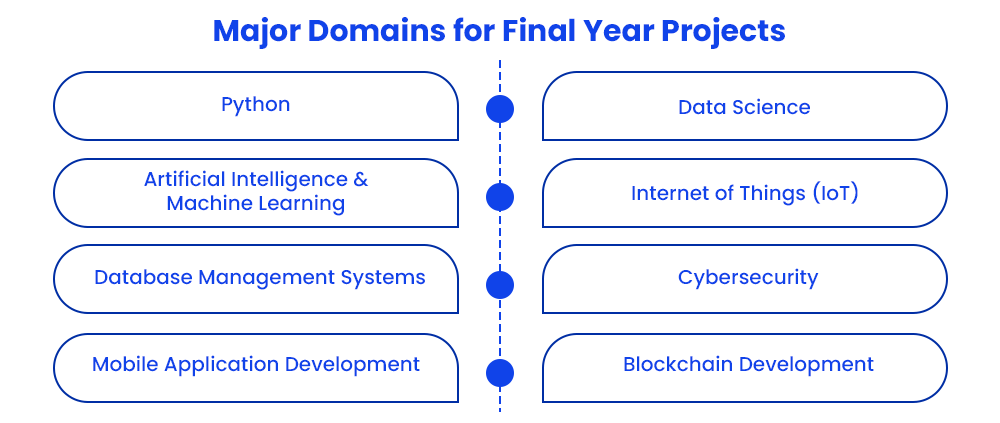
Topics and Ideas for Final Year Projects
Find details of various final year project ideas based on prominent subjects and specialisations below.
Final Year Project Ideas in Data Science
Enlisted below are a few of the unique project ideas for a final year student with respect to the field of data science.
- Heart Defects Prediction Application
A heart defect and health prediction application is software created through information in databases of bodily and heart health and additionally through the medical history of people of all ages and the prediction of whether a person will be affected by heart diseases and will have a heart defect is made systematically through machine learning technologies and identification of the medical history of the various people. These applications are made to retrieve a few simple pieces of medical and health-related information of the user, like his gender, age, congenital conditions, diabetic and blood pressure history, cholesterol levels, etc. Depending on the data collected and comparing it to the available data in the database, the application identifies a probability of an individual having a heart defect. The apps are also capable of estimating the likelihood of an individual developing the defect further into old age.
Such an application would employ computer science concepts such as data science and data analytics, machine learning technologies, full-stack development of the logic and UI development, etc. It can utilize ML models like Neural Networks, Random Forests and Triple-T.
- Weather Prediction Application
A weather prediction application is an application that can be developed for mobile devices and PCs and can predict the weather on a given day, during a given time for a particular geographical region. Such applications are designed to analyse systematic data available in databases for a particular region and collate them with external data sources to display information regarding predicted precipitation, temperatures through the day, wind, sunrise and sunset and so on for a city/region/state. Such applications can base their functioning on data available from meteorological departments

The main functioning of such applications are based on the machine learning technologies, data integrations from various APIs, geospatial integration features using GPS services etc. This application can also be developed as software for the web.
- Sentiment Analysis Software
Sentiment analysis is a central aspect of market analysis and customer insight studies for marketing strategization. Sentiment analysis models and software utilises data (such as comments, reviews, feedback etc.) from social media platforms and other information sharing portals like X, Instagram, Facebook, Reddit, Quora and so on to analyse if they reflect an overall positive sentiment or negative sentiment. Such data is then systematically displayed by the software to provide customer/user insights about a product or service.
Such applications combine AI and machine learning technologies with data science principles by correlating information collected from sentiment-related databases that highlight positively and negatively-worded items and verbs.
- Student Performance Prediction System
Student performance prediction system is an application useful for academic tracking and prediction of a student’s performance. This application gathers and maintains information about a student’s progress in academics with respect to their assignments, presentations, projects, quizzes and tests, examinations and so on for a semester, then providing a predictive final performance score based on the past performance of the student. This application can be highly useful for teachers to track and provide personalised support to students as well as for guardians and students to track and manage their academic activities and strengthen the weaker areas.
In addition to data science and analytical skills, a student must also have skills related to DBMS, frontend and backend development to provide an easy-to-use interface, machine learning techniques like regression, time-series analysis and so on.
- Fraud Application Detector Software
Given the potential of any application to be sold on app stores among the android and iOS users, it is crucial to have software that is capable of identifying the potential sources of fraudulence and behavior of applications. A unique and very useful software can be developed in the field of technology and cybersecurity. Such software systematically applies the stored information concerning the application, trustworthy sources of the application, malicious or malfunctioning features of application functionality and so forth to make a methodical evaluation and, additionally, a detection of whether the application is fraudulent or honest.

Such projects need skilled hands to create such projects, which involve data gathering on the uses, functions, etc., of the app; rule-based identification of abnormal patterns or suspicious malware capable of damaging a system; machine learning technologies that assist in predicting and identifying the fraud apps; real-time tracking and detection capabilities of an app tracker; and provision of feedback on the same.
|
|
|
|
|
|
|
|
|
|
|
|
|
|
|
|
|
|
Final Year Project Ideas in Artificial Intelligence and Machine Learning
While we have already discussed a few projects that require machine learning skills for creation, here we have enlisted a few of the projects that are more focused on the domains of artificial intelligence and machine learning.
- AI Chatbot
Although there are numerous new forms of AI-powered tools that can compose music and artworks, AI-powered chatbots belong to the first category of tools to put the emphasis on AI and its capabilities into the spotlight. Through imitating the human conversational patterns and style, the AI chatbots are in a position to give replies to the queries and chats of the users just as a dialogue between two human beings would be taking place in the chat applications. The biggest strength of AI chatbots is not only imitating human conversation but also giving answers that have been supported by research and information on the internet. Scalability of such a bot, as per what all domains and functions it can accomplish, is determined by the complexity of the project and the ability of the student.
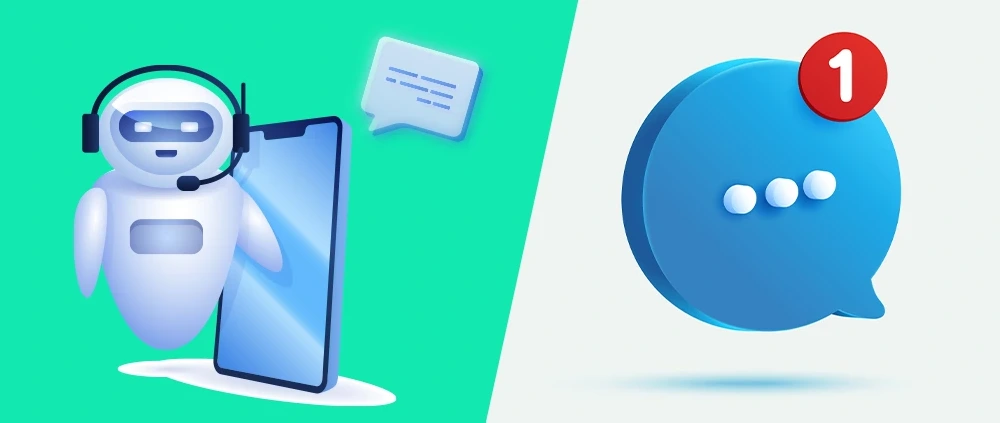
AI chatbots also need the development of a user interface besides the AI technologies and require Natural Language Processing (NLP) algorithms, which can be effective in simulating a human-like form of communication.
- Smart Virtual Assistants
As a CS, IT and technology student, smart virtual assistants are an exciting final-year project to be worked on and will contribute immensely to your portfolio. Intelligent virtual assistants are artificial intelligence assistive applications or tools, which are able to interpret a command or a query and subsequently to identify the answer or solution to those issues through web-scouring intelligence or programming to carry out some specific task such as playing music or turning on the television. Smart virtual assistants can be developed as web-based help on websites, as remote applications on android devices or as AI-assistants on interconnected devices using IoT technologies.
Designing of an AI-assistant comprises of intensive and comprehensive coding, the integration of the natural language processing (NLP) algorithms, the creation of the user interface of the assistant, the integration of voice recognition capabilities, the features of audio-video materials playing, the control of connected equipment, etc.
- Credit Score Prediction Application
A credit score prediction application is a software integrated with aspects like artificial intelligence and machine learning technologies, data science and data analytics to collect finance-related information about a user and correlate it with existing databases to provide the credit score of the individual. Credit scores are very useful in today’s financial sector to attain loans, mortgages, credit cards as well as make informed financial decisions. Such an application provides an estimate of the credit score of a user by using a logic and an index for calculation after collation with existing databases for financial information.
Creating a credit score prediction application can be a rewarding final year project because it helps in highlighting various useful skills in domains like user interface development, data science, artificial intelligence and machine learning.
- Stock Price Predictor Application
A stock price predictor application is a highly useful application for users interested in investments like investment bankers, stock brokers, companies and their shareholders etc. A stock price prediction works by analysing stock price data for various stocks and companies and using AI and ML technologies to make systematic predictions about the stock prices of specific ventures in the future, e.g. a month, in six months or a year. Such data helps users to understand the likelihood of price hikes or falls and make informed financial decisions about investments.
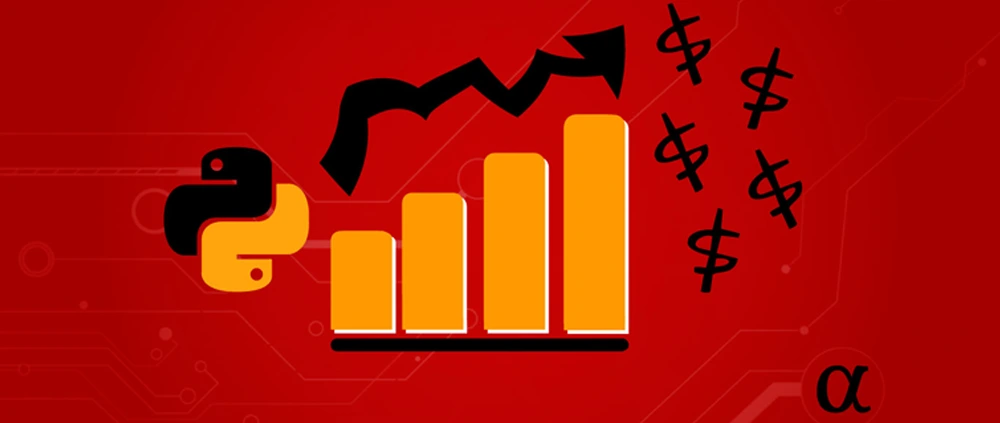
The development of this application, in addition to the user interface, involves integration of ML technologies such as time-series analysis, regression models, recurrent neural networks (RNN) and database API integration to make the predictions based on data.
- Handwriting Recognition Software
A handwriting recognition software is also known as Optical Character Recognition or OCR software. The main purpose of this software is to scan handwritten materials and identify the language, symbols (alphabets and digits) and analyse them to effectively convert them into digital material. Such OCR softwares are very helpful today when we frequently require handwritten materials in the digital format. Such software includes aspects like data collection (in the form of handwritten symbols and digits from various individuals to create a dataset) and machine learning and deep learning technologies to teach the software to recognise the various handwritten letters and digits despite varying handwritings.
Final Year Project Ideas in Python
Python is a highly useful programming language that can be used for diverse purposes. Hence, mastering Python can be a very useful skill for one’s academic and professional success. Here are five project ideas related to Python language that a final year student can consider.
- Dice Rolling Simulator
The dice-rolling simulator is a program that can be used to produce a number between 1 to 6 randomly at the behest of the user and hence imitate the workings of an actual die. Dice roller simulators can be applied to numerous video and Internet games. Dice rolling simulator will function by detecting the command typed by the user, generating random numbers between 1 and 6 in various rounds as the user needs and requesting the user to make another command to generate a number as needed. This type of simulator can be incorporated with video games or other Web-based games and ought to possess a user interface that is very engaging to keep a user entertained.
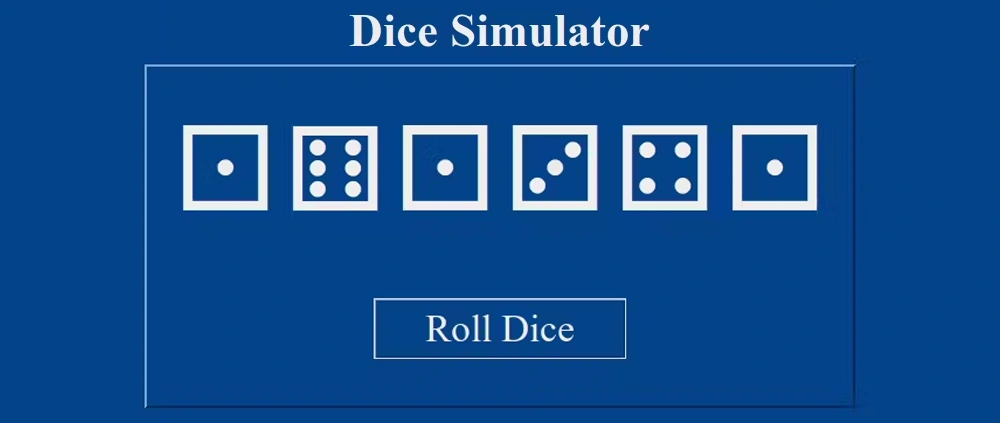
- Plagiarism Checker Tool
A Python-based plagiarism checker is a complex project that is utilized to determine the plagiarism present in the written work by comparing it with the online presence of the sources. There are many plagiarism tracking tools on the internet that are capable of tracing plagiarised writing to different levels though they still cannot track finer details of plagiarism. Being a final year project, you may develop a Python project that will be capable of monitoring the details of the plagiarised content and content without proper citations and references. In this kind of project, Google APIs are also included along with natural language processing models (NLPs) to detect plagiarism in different written works.
- Python File Explorer
File explorer is an app that organizes files, databases, and documents to access and use offline on one's device. These file explorers can be developed to work on android or iOs devices or on PCs and laptops. Other than storing files and inventories, a Python File Explorer can also display the association and routes among the files and folders in a flowchart format. This type of application contains functions such as moving files between locations, copying and pasting files, changing file extensions, searching and querying files, etc. To complete this project, full programming is needed to develop the multiple features discussed above and also the user must have a fair understanding of DBMS and full-stack development to create the connected databases to store the files and the user interface so that the files could be effectively displayed and navigated.
- Regex Query Tool
The purpose of a regex query tool is to primarily provide users with the search for and manipulation of specific searched items/words in a larger piece by matching the user search with the available set of strings, also known as a “regex”. This application is programmed to get input searches from the user and then match them with the regex through crawling. The similar or matched results are then displayed to the user which can be further modified or deleted by the user. It is also a highly useful tool for data scientists and IT developers to identify regular patterns in a library or regex and work with them effectively.
- Image Resizing Application
An image resizing application is a software that can effectively get an input from the user in the form of an image and then take a command about the required output with respect to its size, image quality and extension. The application then converts the input image into the output image by processing it with respect to required output parameters provided by the user. Such an application is designed with incorporation of both Python programming and use of machine learning technologies to create a software that can preprocess submitted data by the user and further convert it into the required output. In addition to resizing the image with respect to its actual size, such applications also include features for resizing with respect to the file extension and the file size.
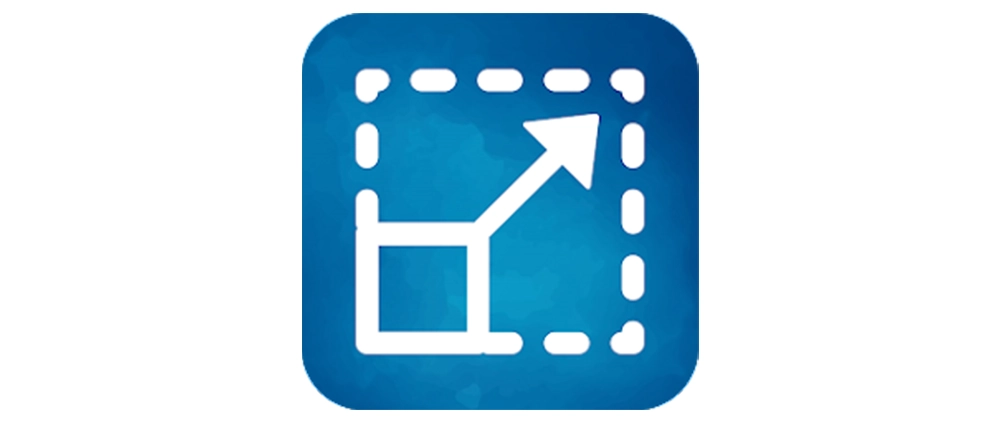
Final Year Project Ideas in DBMS
Database management system or DBMS is another specialisation area in IT and computer science studies that is popularly chosen by students. DBMS has many interesting projects to explore, and a few of those appropriate for final year projects have been discussed below.
- Railway Administrative Database System
A railway administrative database system is an elaborate, interlinked, and multifaceted system that comprises data and information of different trains and railways in an area (a country, a state, or even a district); the rail stations, crossings, and stops; railway routes; their running hours and real-time updates of the same; their ticket prices; passenger information of different stations; cross-links between different stations; and others, among others. Naturally, the development of a database within a railway administration is a demanding and high-stakes endeavor yet can be equally rewarding when taking into account its applicability in the development of a platform of similar databases for a high-stakes system such as the railways. In this DBMS project the student has to develop database inventories that are interconnected and programmed with functions such as search and inquiry of the user and the programming of the user interface of the system. The security measures that ensure confidential information is not snooped by snoopers are also a significant aspect of such a system.
- Hospital Administrative Database System
Just like any other organization, hospitals also require a systematic database platform for storing, manipulating, and accessing data related to their employees and members, their job roles, work responsibilities, patient details, their medical histories, etc. Additionally, in the case of a hospital, the scheduling and appointments of the various doctors and surgeons are of primary importance for effective patient services and attending to medical emergencies. Further, having systematic data about how the various departments are to coordinate for various medical cases is also much needed in organizations like hospitals. Thus, creating a hospital administration database system requires nuanced programming to ensure effective data display, search, and access. Further, such a system should have additional features that allow two types of user access-view access for members of the hospitals and admin access for administrative staff to enter and modify important data as needed.
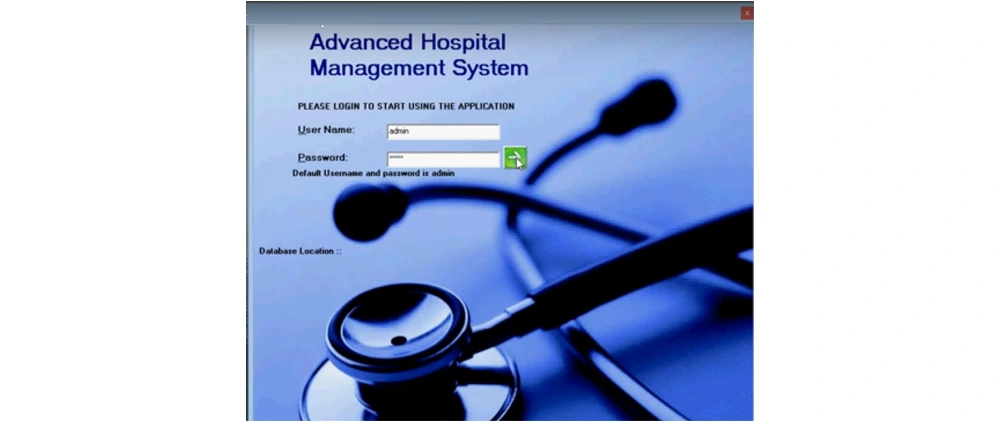
- e-Commerce Platform
An e-commerce platform is a commercial platform or application that can store data about various products for sale. Similar to online shopping platforms like Amazon and Flipkart, a final year can also work on creating their very own e-commerce or online shopping platform for specific products or a variety of products. Creation of this DBMS project includes aspects like providing systematic databases of various products along with their details like stock availability, price, brand, barcodes and so on. Furthermore, it includes the creation of an engaging and attention-catching user interface, features like product sorting based on parameters, predictions about approximate delivery time, GPS-integration to recognise the address of customers, integration of UPI and online payment services for products and so on. This project can help to capture not only your DBMS but also related CS and IT skills like frontend and backend development, graphic designing, cybersecurity etc.
- Payroll Database Management System
A payroll database management system is a platform through which an organisation stores, modifies and accesses information pertaining to employees’ details and financial accounts. A payroll database system includes systematically stored employee data like their personal details, employment codes, tenure in the organisation, job title and job category etc. in addition to details related to their accounts with the company–their approved leaves, unexplained absenteeism, salary, salary segmentation, pay for each month, payslips for various months and so on. This system can be highly useful for administrative and finance departments of various offices in the private and public sectors for management of the finances and payrolls of employees.
- Blood Donation Management Database System
A blood donation management database system is a platform used by blood banks for management of medical data of donors as well as stocks of bloods of various groups. Such a DBMS project involves creating the databases for donors including their personal details and medical histories, databases for blood stocks, databases for various recipients of blood and the hospitals and healthcare institutions which are associated with the blood bank. This is a highly useful DBMS tool and also serves a socially relevant purpose, making it a good project to work upon, both from an academic and portfolio-building standpoint.
Final Year Project Ideas in Cybersecurity
Cybersecurity is concerned with the creation of softwares, tools and technologies that allow effective safety of users in cyberspace and the protection of digital data and information from unauthorised misuse. Here are a few of the projects in the specialisation domain of cybersecurity.
- Face Detector Application
A face detector application is a software that can trace and scan faces in motion to identify its facia; features and further match them with existing database information regarding the facial features of specific users. The face detector app then identifies the face of the user by matching the facial features in the input video with database information. Such software and application can be used in tandem with other security verification on electronic devices as well as for purposes like surveillance, two-step authentication, entry and exit tracking of various visitors in a particular space/office etc.
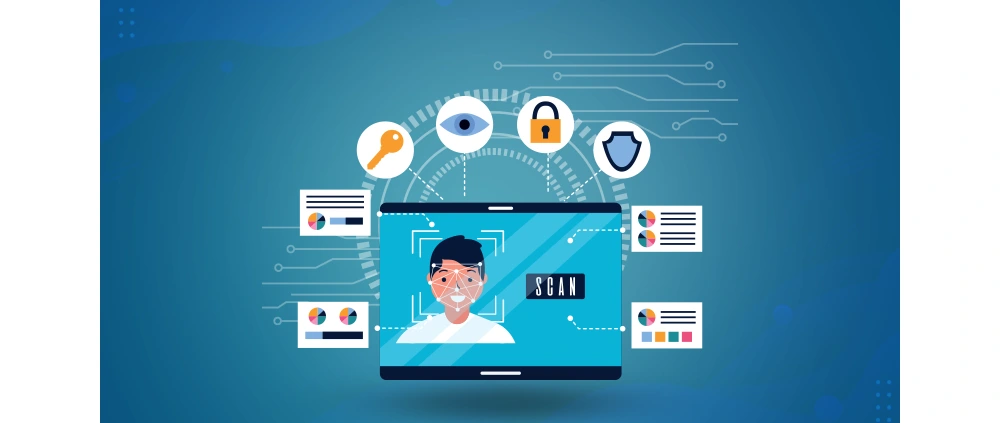
- Anti-Piracy Software
Ant-piracy softwares try to track and regulate the piracy of any unique and copyrighted content on any platform or by any user to reduce the misuse and unauthorised reproduction of digital content. Anti-piracy softwares work by tracking the attacks made on authorised software, information and secure databases, track the attacks to the attacker and then bring down illegal reproduction or distribution of such content and information. Anti-piracy softwares are crucial to cybersecurity and copyright issues and provide a safeguard against the misuse of authorised data and information. They are designed with features including AI-technologies, tracking bugs and so on to provide cybersafe and piracy-proof platforms for use.
- Voice Recognition Software
Voice recognition softwares are tools that are programmed to analyse the content and quality of speech or voice to convert it into a digital format like text, carry out the commands given in the audio medium or even recognise the person whose voice is being taken as the input. It can also be used as a biometric security measure for two-step user verification and as part of virtual assistants to receive audio commands for operations. Voice recognition softwares are coded with features for taking audio commands, for matching voice quality of the input with the audio characteristics recorded in the software’s API as well as equipped with machine learning technologies that can understand human voice/commands and convert them into written or textual formats.
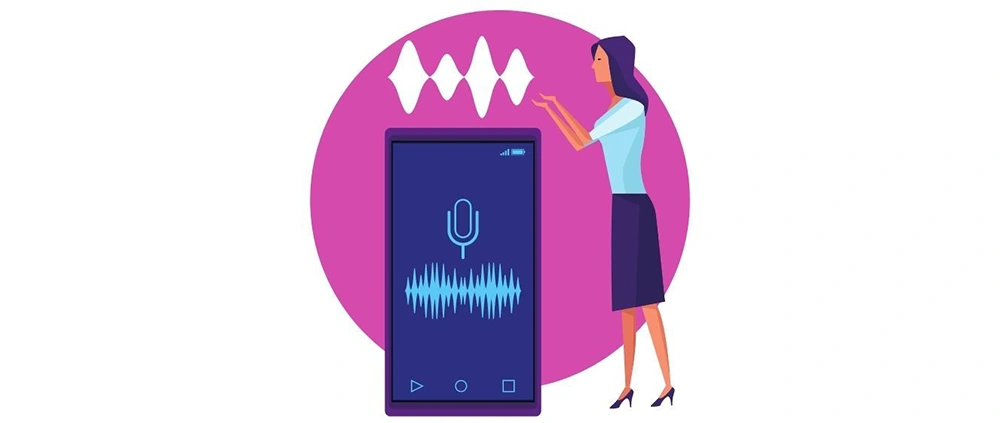
- Code-Decode Generator
Code-decode generators are important stenographic tools that can enhance the cybersecurity of information, especially information being communicated through a digital channel like internet manifold. A code-decode generator converts input data into encrypted format using random symbols at the input user’s end and decodes the message back into its original format at the output user’s end. Such a software prevents the stealing of sensitive and personal information of users by unauthorised users due the encryption format for which the logic and algorithm is only stored on the software. Such programs are challenging to develop but highly revered as a final year project for a CS or Software development student.
- User Authentication Software
A user authentication software is a cybersecurity software that incorporates various modalities of authentication and identity verification of the user/individual trying to access a software/tool/database. Such systems usually include measures like password and passcode verification, fingerprint verification, voice recognition, facial detection and recognition and so on. Such a software should be integrable with other tools/applications/database systems and depending upon the security needs of the application, two-factor or multifactor authentication can be conducted for providing secure access. Such systems and softwares are highly useful in the IT, tech and financial sectors.
How to Pick the Right Final Year Project?
Like we have already delved upon, choosing the right final year project is very important owing to the high stakes of the project as well as its impact on your portfolio and future career prospects. However, selecting a project topic for your final year project is easier said than done, and selecting the project right for you and your academic-professional needs is all the more tough.
While it is important to remember that there is no one-size-fit-all approach and certainly no “perfect” project to go with, there are some projects which are academically more useful and motivating for a particular student. Identifying that project is key to selecting the right topic.
Here we have explained a few primary tips you should keep in mind while selecting a final year project and in the future for selecting arenas to explore.
- Analyse Key Interest Areas
Firstly, to land up with a project that reflects quality work and effectively encapsulates your skills, you should select a topical area that matches with your interest area. This is a useful start since it allows you to identify areas that would be more motivating and satisfying for you to work upon. So, while selecting a topic for your final project, start by identifying your prime areas of interest and exploring further specific topics in that domain.
- Analyse Proficiency Level
It is important to select a project that matches well with your current level of expertise and proficiency in your topical area or subject. While selecting an over-simplistic project might not reflect well upon your evaluations for the course, selecting a very complex and advanced topic may lead to a compromise on the quality of work you are able to exhibit in the project. Thus, it is important to select projects that match the level of difficulty you can handle to avoid demotivation and produce effective results.
- Research Before Finalising a Topic
This is an aspect that cannot be emphasised enough since it is often missed out upon by students while deciding upon a topic. After you have identified your key interest areas, research about its related aspects such as the recent works and developments on that topic, the various potential project topic ideas in a major subject area and so on. This will be helpful in making an informed choice about your project topic as well as identify lacunae in current works on a topic, thus stimulating innovative ideas for projects.
- Select the Right Mentor/Supervisor
Working on a curriculum-integrated project would also entail the allocation of a project supervisor for guidance and mentorship during the course of the project. You should be mindful of seeking a mentor or supervisor who is well-versed and an expert in the field you wish to work further upon as well as invested in your project to provide the right guidance and continued support you need.
- Be Mindful of Your Career Goals
This is a very essential aspect to consider when you are selecting the project for your final year. Since the final year implies you are soon to venture into professional and industrial fields, it is important to align your selected project to your primary career goals and industrial domain of interest for effective portfolio building. Furthermore, it also means you can develop hands-on experience in the kind of responsibilities and problems that arise in the actual industrial environment
- Be Mindful of Practical Constraints
While a few of the practical aspects to keep in mind have already been discussed such as the career goals and objectives of the student, there are certain other practical constraints that one has to pay attention to while selecting their practical skills. These include attention to the time required to develop the project and the time one can realistically allot to it whilst managing other curricular work, the difficulty level of the project, the utility of the project in the professional domain or practical life and so on.
By considering these tips to select a topic for your final year project, you are more likely to end up with one idea that fits your unique academic contexts and professional goals.
Top Trending Articles
|
|
|
|
|
|
|
|
|
|
|
|
|
|
|
Conclusion
Therefore, it is possible to notice that the choice of the appropriate project to be held during the last year of the degree is rather significant to be able to receive a satisfactory evaluation and build the portfolio efficiently in the future. Technology and computer studies also have numerous and wide topical areas, such as artificial intelligence, machine learning, data science, DBMS, Python language, etc., that are so revered and can hence make a great project to work on. This blog has given me a list of project topics and ideas about such fields as well as tips on choosing the best project to do on your own. A bright academic and professional future for a student can also be secured by picking the correct topic for the final year project, depending on the areas of interest, career aspirations, and extensive research.
FAQs (Frequently Asked Questions)
Some of the best final year projects to work upon include mobile softwares in android and iOS modes, AI chatbots, search engine platforms, administrative database systems, Python games etc. The best final year project to take up depends majorly on your specialisation and subjects of curriculum in addition to your personal interest and strength areas.
To choose the right final year project, seek consultation from your mentors, identify your key interest areas in your specialisation subject, identify your career goals and research about major topics of interest. These steps will help you narrow down your ideas and finally select the right topic for a final year project.
Some of the best software development projects for one’s final year include anti-piracy softwares, search engine softwares, face detection softwares, sentiment analysis softwares and so on.
Some of the best AI and machine learning final year projects include those like creating virtual AI-enabled assistants, AI chatbots, various prediction applications and so on.
Some of the best Python projects to work upon as a final year project include those like tools for anti-plagiarism, games for mobile devices and online modes, sentiment analysis models, regex query tools etc.
Topics like stock price prediction models, health prediction models, fraud detection applications, weather prediction applications, sentiment analysis projects etc. are good to explore as final year projects in data science.
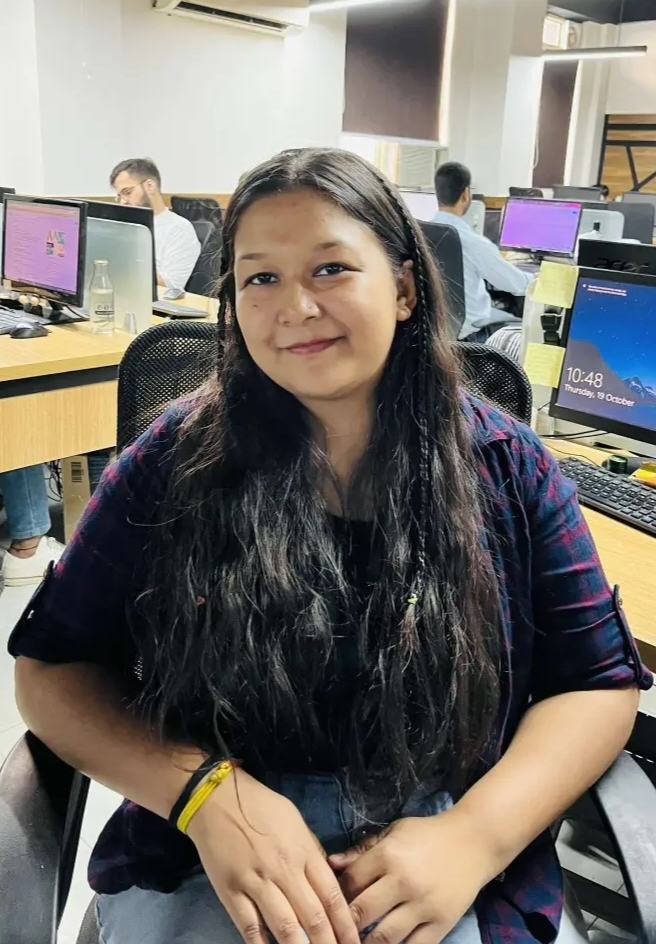
3 Years of Experience / Narrator
With 3 years of experience in content writing and copywriting and keen interest in voiceover and scripting, I, Isha Adhikari, am passionate about content creation and narration.
Every query is essential.
Our team of experts, or experienced individuals, will answer it within 24 hours.
Recommended for you
Tired of dealing with call centers!
Get a professional advisor for Career!
LIFETIME FREE
Rs.1499(Exclusive offer for today)

Pooja
MBA 7 yrs exp

Sarthak
M.Com 4 yrs exp

Kapil Gupta
MCA 5 yrs exp
or



Career Finder
(Career Suitability Test)
Explore and Find out your Most Suitable Career Path. Get Started with our Career Finder Tool Now!
ROI Calculator
Find out the expected salary, costs, and ROI of your chosen online university with our free calculator.

